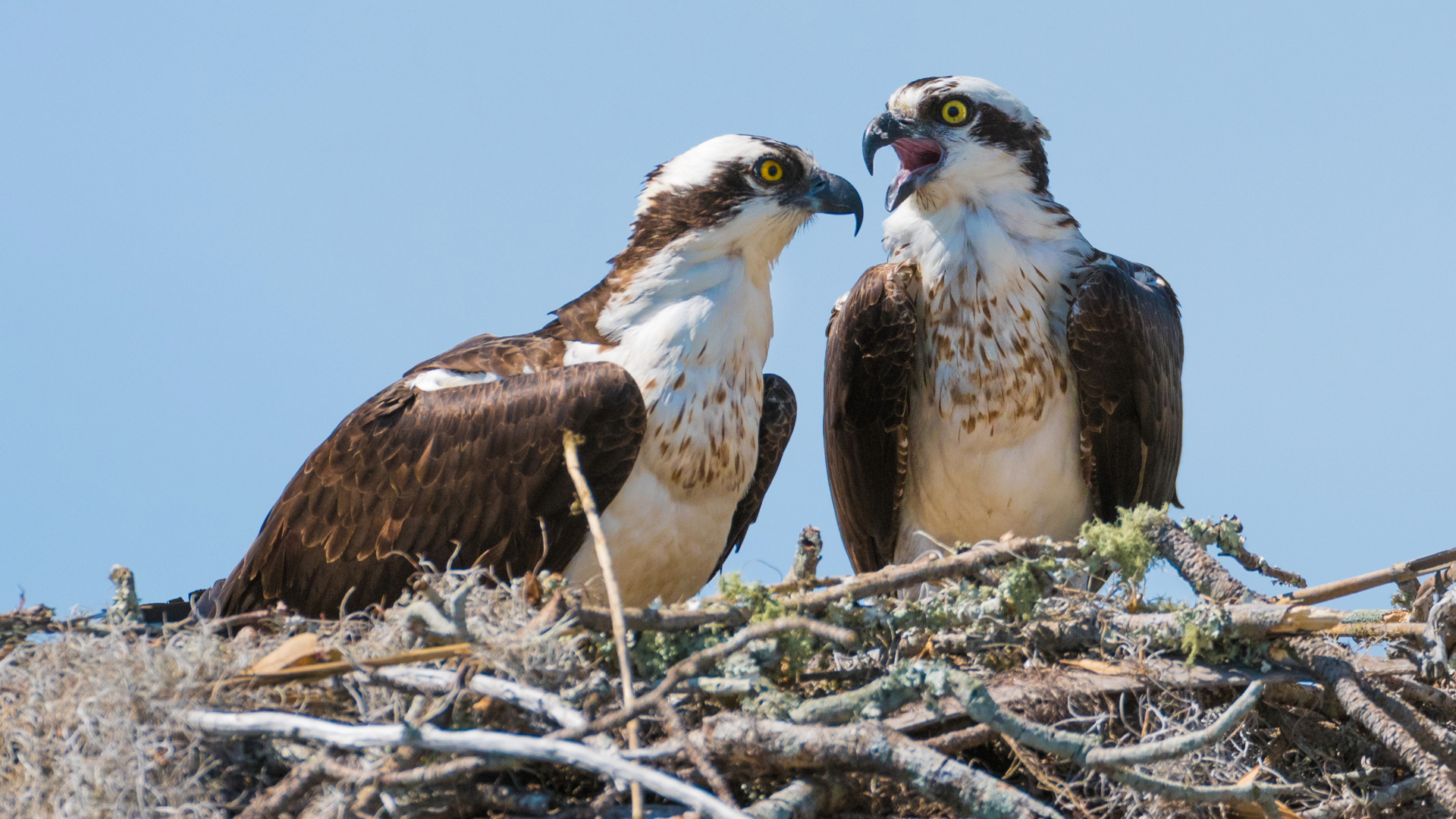Q: Osprey are returning to Lake Champlain – but where are they coming from?
Many birds of the Lake Champlain region migrate south each winter in search of suitable conditions. The osprey undertakes one of the most unique and adventurous winter journeys, venturing far into the Southern Hemisphere each fall and returning to their northern nesting sites in the spring.

Osprey in the Lake Champlain Basin
Have you ever seen the large nests that dot the tops of dead trees and nesting platforms throughout the Lake Champlain basin? If you look closely during the summer, you may even see a resident osprey. Once endangered, concerted restoration efforts have brought thriving populations of osprey back to our region and summer sightings are always cause for excitement.
Most osprey throughout the world are migratory, nesting throughout much of the Northern Hemisphere during the spring and summer. They feed exclusively on fish and make their homes near lakes, rivers, bays, and coastlines.
Ospreys reside in their summer nests until September when fledglings hatch. After several weeks in the nest, both the juveniles and adults begin their migration south. Until recent decades the extent of their long journey was not well understood, but researchers using satellite telemetry have been able to track the annual migrations of osprey. Their findings reveal astonishing stories of birds lost at sea, adventuring through tropical islands, and if they’re lucky, surviving the long journey south. Birds departing from North America may settle in the southern United States, though many will travel as far as Central and South America.
Why Migrate?
Ospreys are raptors, also known as birds of prey, who feed exclusively on fish. During the summer months in the Lake Champlain basin, warm water temperatures bring perch, white and redhorse sucker, and brown bullhead to the surface of the water. These fish are the basis of the osprey’s summer diet.
With the arrival of cooler autumn temperatures, fish slowly begin to retreat to the depths of the lake. Frozen shorelines, solid grey skies, and the lean winter months appear on the horizon. To survive, the osprey must follow their food sources. In much of the Northern Hemisphere, that means heading south. Yet despite the promise of abundant food and wintertime warmth, the osprey’s journey is full of risk and comes at an immense energetic cost.
The Journey South
In the early 2000’s, Mark Martell at Minnesota Audubon and Rob Bierregaard at the University of North Carolina, Charlotte began researching osprey migration using tiny tracking “backpacks.” In the lineage of their research is a juvenile bird named Penelope who, in September of 2008, took off from Martha’s Vineyard, Massachusetts. The first legs of her journey brought her through Maryland and North Carolina, before making a long flight to the Bahamas, where she spent four days. She then stopped briefly in the Dominican Republic before flying over the Caribbean to a small island off the coast of Venezuela. One week later she had landed in the rainforest of French Guiana, where she stayed for the next year and a half before migrating back North.
For juvenile birds, the first flight South is perilous. Their parents depart the summer nest first, so the young birds must find their way alone. Genetic instincts pull them South, but it is common for juveniles to be blown off course, not yet able to adjust their flight path for intense crosswinds. Data from satellite trackers show, however, that year over year a bird will hone in on an optimal path, including identifying the best layover sites. They become adept at factoring crosswinds in their flight path, calculating the precise direction they must fly to stay on course.
Making a Home
Ospreys are faithful to their seasonal nesting sites, returning year after year to breed or to overwinter. Ospreys typically mate for life and upon returning to their summer nest, both will contributing to rearranging and adding new sticks and other woody material.
Sources: All About Birds, Audubon, Chesapeake Bay Foundation, Naturally Curious with Mary Holland